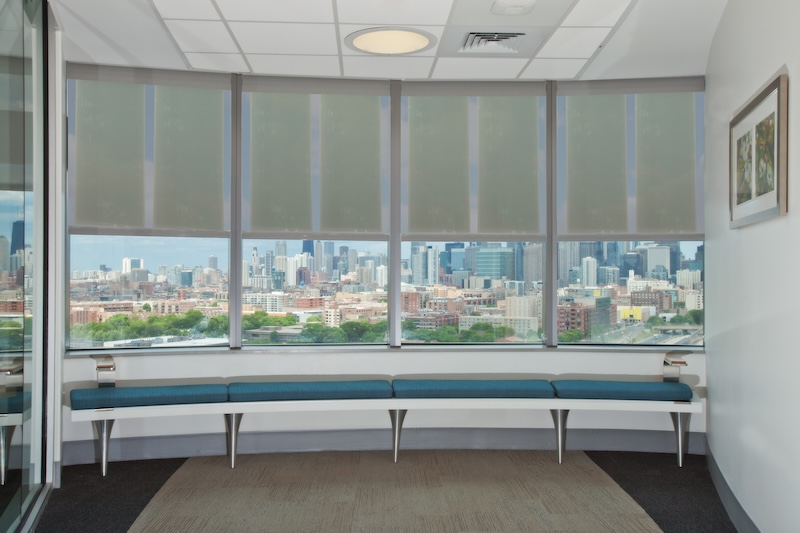The Future of Green Buildings: Advancing Sustainability with Printed Semiconductor
Green buildings are transforming the way we design, construct and operate structures by focusing on energy efficiency, environmental responsibility and occupant well-being. As technology evolves, innovations like organic printed semiconductor systems are redefining how buildings generate and manage power, pushing sustainable architecture into a new era.
A holistic approach to green building
Sustainable buildings take a lifecycle approach, considering every phase — from planning and construction to operation, maintenance and even demolition. Commercial spaces, for instance, see tenant turnover roughly every seven years, requiring adaptable solutions that minimize waste and energy consumption. Yet, many energy technologies commonly used today, like silicon solar panels, grid-dependent wind turbines and diesel generators, have remained largely unchanged since the 1970s, limiting their efficiency and sustainability.

One of the most promising breakthroughs in zero emission energy and sustainability practice is organic printed semiconductor technology. Developed from graphite (carbon) nanoparticles and developed as Fullerene in 1985, organic printed semiconductor can generate zero-emission power and reduce solar heat gain by capturing visible, near-infrared and artificial light. This innovation enhances grid resilience, reduces transmission infrastructure costs and shifts energy reliance away from outdated AC systems to more efficient low-voltage DC power solutions.
Reducing environmental impact with smarter energy solutions
A core goal of green building is to minimize harmful emissions and land use. While fossil fuels are often criticized for their environmental impact, silicon-based solar panels and wind turbines pose a large sustainability challenge due to their energy-intensive manufacturing process, residual cleanup and vast land impact. In contrast, more advanced technologies such as printed semiconductors provide a cleaner alternative from carbon nanoparticles that do not require combustion to make power. The nanoparticles exchange electrons from light waves that can be tuned for UV, visible light, and infrared absorption for zero emission power generation and solar heat gain reduction.
Unlike traditional silicon solar panels and wind turbines, that may contain rare earth materials and toxic substances; printed semiconductor systems are free from hazardous components and can be printed on flexible materials such as recyclable PET plastic, creating nanoparticle power plants that can be installed both in the interior and exterior of green buildings. The nanoparticle power systems are lightweight, flexible, and semitransparent making installations scalable, adaptable and with long term durability.

Maximizing energy efficiency and resource management
Energy efficiency is at the heart of green building design, and printed semiconductor technology enables on-site power generation while also reducing solar heat gain. These on-site zero-emission power plants absorb both artificial and natural light, and can be integrated into windows, skylights and motorized shades for offices, hospitals, hotels, schools — just about anywhere you could think of.
When paired with low-voltage DC power distribution, such as Power over Ethernet (PoE), buildings can achieve higher energy efficiency while supporting smart automation systems. Additionally, combining printed semiconductor with distributed battery storage enhances grid resilience, reduces dependence on large-scale transmission infrastructure and lowers overall energy costs.
Enhancing the indoor environment
Beyond energy savings, green buildings are designed to promote the comfort and well-being of occupants. For example, printed semiconductor motorized shades contribute to healthier indoor environments by generating clean energy, minimizing wiring costs and reducing glare and solar heat gain. This leads to lower HVAC energy demands and more stable temperatures, improving air quality and upholding comfort levels for everyone inside.
In fact, printed semiconductor shade models on the market feature motorized controls that adjust automatically based on sunlight exposure and radiated heat levels. This not only enhances energy efficiency but also aligns with smart building technologies that create adaptive, responsive indoor environments.
Recyclable materials and waste reduction
Sustainable architecture emphasizes the use of recycled, renewable and locally sourced materials. Printed semiconductor aligns with this principle by utilizing fully recyclable PET plastic, helping reduce waste in landfills and oceans. As the technology evolves, future applications, such as rooftop solutions, will incorporate even greater amounts of recycled materials, reinforcing sustainability efforts throughout the built environment.

Moreover, unlike wind turbines and silicon-based solar panels that may contain non-recyclable components and toxic materials, printed semiconductor systems are designed for minimal environmental impact. By avoiding rare earth elements and reducing resource-intensive manufacturing, these systems provide a responsible on-site, zero emission energy solution in modern construction.
The road ahead for green buildings
As the construction industry embraces sustainability, printed semiconductor technology is poised to become a cornerstone of next-generation green buildings. By integrating this innovative solution into architectural design, developers can accelerate the transition to a cleaner, more energy-efficient future. With continued research and investment, the building stock of tomorrow will be smarter, more resilient, and more sustainable than ever before.
Paul Frischer is CEO at ORENgE Power, a breakthrough, disruptive and fully commercialized new onsite energy platform from printed semiconductor film.
ORENgE Power | www.orengepower.com
Author: Paul Frischer







